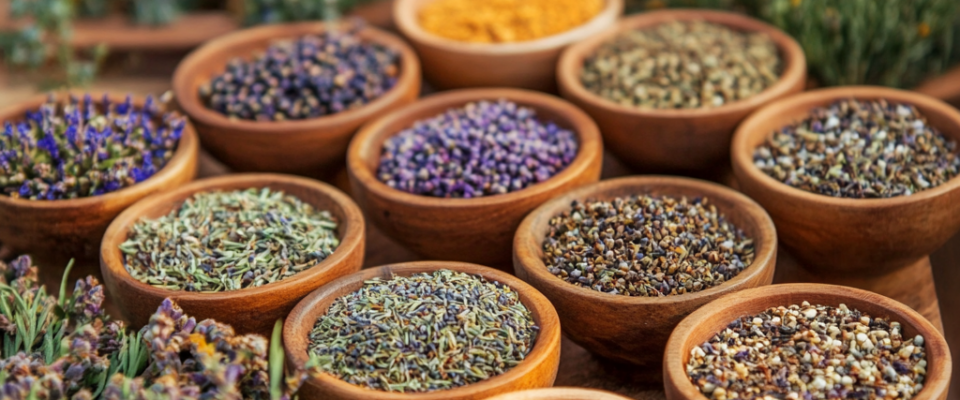Aromatic plants play a vital role in the cultural and religious practices of many peoples. Their use dates back to ancient times, when fragrances were considered a bridge between the earthly and the divine. These plants were used to cleanse space, attract spiritual harmony and mark sacred moments.
Why are scents so important? They affect not only physical perception, but also the spiritual state of a person. Due to their ability to awaken emotions and aid concentration, aromatic plants have become an integral part of the rituals of many religions.
Historical roots of the use of aromatic plants
Since ancient times, people have used aromatic plants to create a special atmosphere. The Egyptians were the first to use myrrh and frankincense incense in religious ceremonies. These components were considered sacred and symbolized the connection with the world of the gods.
In ancient Greece and Rome, fragrances were used in temples to purify and attract the favor of the gods. Ritual smoking using aromatic resins were not only a way of communicating with deities, but also a means of purifying the soul. In Asian cultures, plants such as sandalwood and patchouli have achieved sacred status due to their ability to induce states of meditation and peace.
The role of fragrances in Eastern religions
Buddhism and Hinduism have used aromatic plants as an integral part of their rituals for centuries. Here are the key plants and their meanings:
- A chair: Symbolizes purity and enlightenment, used to create an atmosphere of meditation.
- Palo Santo: used to cleanse space and attract positive energy.
- Lotus: its aroma is associated with spiritual uplift and wisdom.
- Cover: Promotes concentration and improves spiritual perception.
- Nim: Used for protection against negativity and cleansing.
These plants help deepen your practice, strengthen your connection to the spiritual world, and prepare your mind for prayer or meditation.
Biblical traditions of frankincense and myrrh
Frankincense and myrrh are mentioned in the Bible as symbols of divinity and holiness. These plants were used to consecrate temples, perform sacrifices and religious ceremonies. Incense symbolizes prayers rising to heaven, and myrrh is often used for purification rituals.
Over the centuries they have retained their importance. In Christian rituals, incense is still used to create an atmosphere of reverence and spiritual focus. In Old Testament texts, myrrh is described as a component of sacred oils, which emphasizes its status as a sacred plant.
Aromatic plants in Islamic rituals
In Islam, aromatic plants are also important. The Prophet Muhammad considered incense to be a blessing and recommended its use for cleansing the home and preparing for prayers.
Oud tree (agar) is often used in rituals, which creates a rich and deep aroma. It symbolizes connection with Allah and helps to concentrate during prayer. Other popular fragrances in Islam are rose and amber, which are associated with purity and heavenly beauty. The use of fragrance in Islam emphasizes the importance of internal and external cleanliness.
Modern rituals and a return to ancient traditions
In the modern world, the use of aromatic plants has become part of everyday life and spiritual practices. People are returning to ancient traditions, using plants such as sage and palo santo to cleanse spaces and promote harmony.
Aromatherapy also plays a significant role in helping you relax, relieve stress and improve your overall well-being. Plants that have been used for thousands of years are becoming relevant again, recalling the importance of balance between the physical and spiritual.
Aromatic plants are not just a means of creating a pleasant smell, but also a powerful tool that can influence spiritual development and inner state. Their importance in religions and rituals confirms their universality and power.
By adding fragrances to our lives, we can touch ancient traditions and feel their impact on ourselves, while maintaining a connection with our cultural and spiritual heritage.
The most commonly used are frankincense, myrrh, sandalwood and agarwood as they are associated with purification, spirituality and holiness.
Yes, they can be used for meditation, clearing space and improving mood, maintaining harmony in everyday life.

